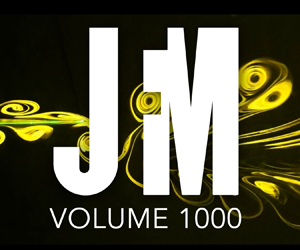JFM Perspectives arose primarily from discussions of how to follow the successful book Perspectives in Fluid Dynamics edited by George Batchelor, Keith Moffatt and Grae Worster (BMW) and published in 2000. The BMW book consists of 11 chapters covering a wide range of fluid dynamics from laminar flow to geophysical flows with the aspiration, in the words of the editors, ‘that it will be read and enjoyed by fluid-dynamicists at all levels as a means to learn and appreciate the great breadth and wealth of our subject’. Given that this sentiment was still an aspiration ten years later, Keith Moffatt and Grae Worster discussed commissioning a sequel to BMW. However, it was clear that, as in BMW, the number of topics would be necessarily limited and fixed in time while, on the other hand, the possibility of writing Perspective ‘chapters’ in JFM removes both these restrictions. It would be possible to cover a wide range of topics in the journal and in a timely fashion. Consequently, and after extensive discussion with Cambridge University Press and the JFM Editorial Board, it was agreed in 2014 to establish JFM Perspectives with a separate Board who would determine the procedure for obtaining articles.
The Perspectives Board decided that papers would be invited by the Board and that self-nominations would not be allowed, and, strongly motivated by the sentiments expressed in the preface to BMW, the letter of invitation carried the following instructions to authors:
JFM Perspectives are by invitation only, are intended to be critical surveys of the state of particular topics, and should be structured so that a person entering the specific field without specialist knowledge can access and understand the key results and current major research. We welcome personal views of a topic by leading experts: indeed articles should not primarily be literature surveys and may contain pedagogical material. We would also welcome your thoughts on why you chose to work on the subject of your article and the likely future directions of your area of research.
References/citations should be selected critically to introduce and focus attention on the main ideas rather than being exhaustive, and we recommend that no more than 50 are included.
These instructions were inspired by the remarks in the preface to BMW ‘The material is intended to be introductory in that it does not assume any prior knowledge of the sub-fields, but the reader will benefit from a general foundation in fluid dynamics as normally taught at undergraduate level. Authors are charged with being didactic rather than providing a comprehensive survey of the literature surrounding their subject. References have therefore been kept to a minimum, intended primarily to point the student either to seminal works or review articles’. It is in this sense of personal viewpoint and a didactic approach that we wished to distinguish JFM Perspectives from other reviews.
Since the first article published in 2016, there have been a total of 18 articles published at a rate of between two and three per year, with authors from Asia, Europe, the UK and the USA. Reflecting the balance of topics in the Journal, turbulence has been quite extensively covered with articles on pipe and wall turbulence and turbulent cascades and ‘ideal theory’ and renormalisation group theory. Other topics include binary fluid mixtures, granular suspensions, swimming, flow over engineered surfaces and between compliant walls, surfactant dynamics, combustion systems, liquid sheets, topological aspects, the reciprocal theorem and the electro-fluid-mechanics of the heart. The average number of citations (Web of Science) stands at just below 100 per article, with two Perspectives having over 250 citations, implying that these articles are having a significant impact on current research.
Perspectives are unique in JFM as invited articles and so the question was how can this be reconciled with papers being peer reviewed – rightly seen as a major strength of the Journal? Peer review has two main functions. The first is to select for publication correct and interesting (to the readers of JFM) papers. The second, and possibly more important function, is to improve papers before they are published. In my own experience my papers have benefited on almost all occasions from careful and thoughtful referee reports, and this is a major reason why JFM is held in such high regard in the community.
Consequently, the Board established a procedure where the papers were read by the Chair of the Board and one other Board member close to the subject, the latter often having suggested inviting the relevant author. I learned a huge amount from my time as Chair as a result, and I was consistently impressed by the extremely high quality of the papers. This collection of papers provides some of the most vivid accounts of aspects of our field, and some of the most outstanding pictures and diagrams: the physical beauty illustrated by these figures is one of the unique and inspiring features of our subject. They also contain, as intended, the personal views of the authors: why they have chosen to work on a particular problem, what fascinates them and how they see the future develop.
As new Perspectives are added I expect that this will be a living and evolving body of work, serving the community and enhancing the reputation of JFM well into the future.




